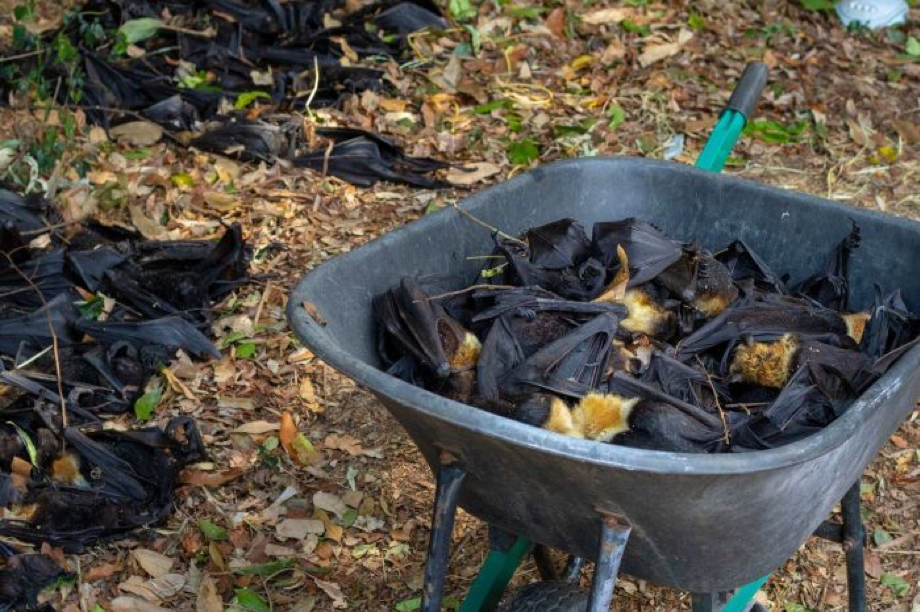The Climbing Extinction Rates and our Stagnant Laws
Words by Austen Hunt
This article is part of PULPCLIMATE week. CLICK HERE to join the facebook group. University of Sydney Students will be marching from Fischer Library at 10:00 AM on the 20th of September.
We are at a tipping point. Scientists and communities around the globe have been voicing their concerns about the rate at which our planet's biodiversity is receding. The impending climate crisis threatens to raise temperatures beyond 2 degrees celsius which will place undue pressures on natural systems. Ecosystems will be forced to adapt or die, species will have to relocate or perish, and all of this has to occur with the backdrop of an ever-hungry and developing human population. Industrialisation has come at the cost of all other species at an astounding rate. In recent decades more than 50% of all individual animals have been lost and mammals are beginning to go extinct at unprecedented rates. Between 10,000 and 100,000 species have been reported to go extinct each year.
The victims of the mass extinction are many but the culprits seem to be few. Humans have exacerbated climate conditions by radically increasing the rate at which they emit greenhouse gases, continuing to show disregard for natural ecosystems which have sequestered these gases, and competitively industrialised their economies. The trajectory of this development is dire and systemic change is required to reimagine what is valued, how we monitor conservation, and who is accountable for ensuring that this disaster is mitigated as best as possible.
It is all too easy to point at a global problem and distance it from our own ways of life and surroundings, so let’s localise this a bit.
Australia currently has more than 641 species which have been listed as threatened, of these 44 are birds and 35 are mammals. Between the arrival of the first fleet in 1788 and the early 1940’s more than 10% of Australia’s mammals had gone extinct. Furthermore, since settlement Australia has seen more than 40% of its forested areas fall victim to deforestation, and the pockets of greenery which remain are fragmented and still place strain on keystone species which manage delicate ecosystems.
Each species lost will detract from the ability of natural ecosystems to revitalise themselves. The country has witnessed horrifying incidents which have directly linked the issue of rising temperatures to the loss of vital species such as our flying foxes. In November of 2018 a heatwave experienced in far north Queensland was the cause of an unprecedented loss of life for these humble bats. Although these bats are responsible for spreading the seeds of myriad species of foliage, the event failed to register as the crisis it was for the incumbent federal or Queensland government.
The link between economic development and a deteriorating environment is apparent. Institutions which have been created to protect our biodiversity are neglecting of directly promoting financial prosperity over precautionary approaches. This can be seen in how Australia has fought to obtain, and maintain, its limited legal protections which are afforded to our environment.
Prior to the Environmental Protection and Biodiversity Conservation (EPBC) Acts creation in 1999, there has been limited federal legislation which has sought to entrench protections. Tim Flannery, a renowned Australian biologist and conservationist, has pointed out that while legislation was introduced in 1992 to ensure that all animals listed as ‘threatened’ must have a recovery plan written for them which “all agencies must act in accordance with”, this has only been used on a vertebrate species once: the saltwater crocodile, which simply mandated that shooting for pelts must be limited until populations had recovered. A solution which, while conducive to conserving a species, required far less proactive planning then dealing with stressors posed by a changing climate.
The creation of the EPBC Act has still failed to ensure that natural ecosystems are protected. Instead it has been the subject of amendments by conservative governments which have sought to limit the extent to which the act can be triggered, seeking to abolish clauses which grant legal standing to involved conservationist groups (whether they be concerned communities or active non governmental organisations).
The lack of protection that our current legal code affords our environment can be seen in how readily any sitting government can propose changes or exemptions to the legal code. The industries which have seen the greatest concession are the obvious culprits: forestries and mining interests. In Western Australia national parks and ‘A-class nature reserves’ remain open to mining interests given they receive cabinet approval. In South Australia, national parks status does not prevent mining interests from submitting requests for exploration titles in protected lands. Queensland lacks an upper house, allowing the impulsive whims of parliament to reign supreme without mitigation. And of course, New South Wales is still fighting to protect its national parks as independent bills introduced by John Barilaro, the Deputy to the Premier, seek to open up the Murray Valley National Park to de-gazetting.
Institutions need to change to be able to properly cater for the problems facing our environment and our planet. The incorporation of progressive mandates is required to not only entrench protections, but to ensure that economic developments are not prioritised at the expense of our natural heritage.
There is hope however. A global wave of recognition has seen legal codes adapt to enshrine the protections of nature. Unlikely champions such as Ecuador have given mother nature rights, allowing her to be represented in court as an ‘aggrieved persons’. This stride has allowed for the otherwise disenfranchised indigenous Waorani community to successfully win a landmark court case against three government bodies to prevent the development of new oil extraction facilities. Other efforts can be seen through the steady incorporation of the Precautionary Principle into state proceedings, a principle which (while non binding) seeks to ensure that adequate studies are conducted into potential harm before any development can commence.
The rate of species extinction continues to rise while a comfortable status quo is maintained. The process of addressing this crisis must begin with the recognition that our current system needs drastic reform. Legal protections are required to prevent harmful developments from commencing, and direct action is required to begin to reconcile the loss of life which is being encouraged by our current practices.



